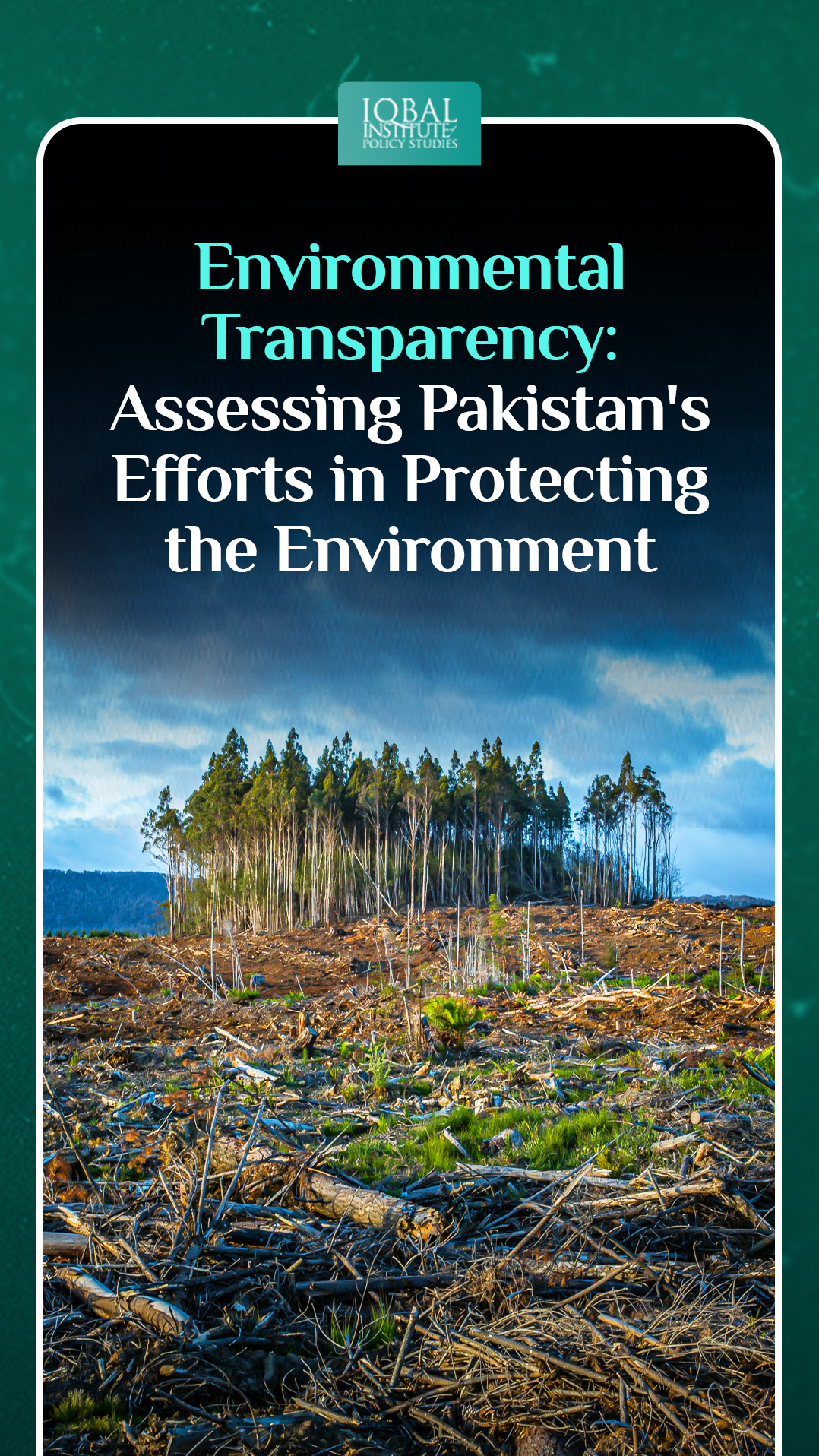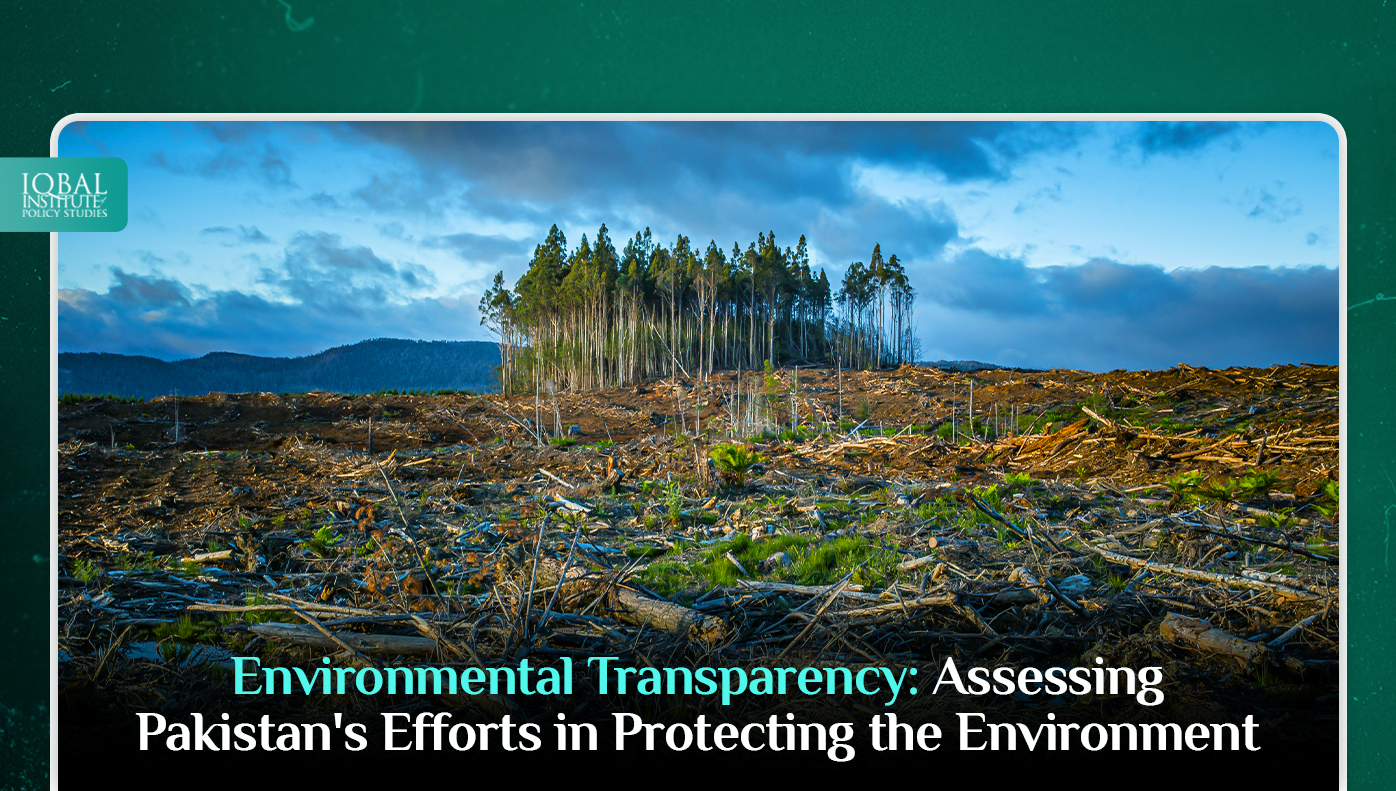The intricate tapestry of Pakistan’s natural landscapes, from the towering peaks of the Himalayas to the arid expanses of its deserts, stands as a testament to its extraordinary ecological diversity. Yet, beneath this striking beauty, the nation faces a pressing dilemma — the urgent need to safeguard its environment in the face of formidable challenges. In an era dominated by growing global concerns over climate change and its far-reaching repercussions, it becomes increasingly imperative to scrutinize and appraise a nation’s endeavors in environmental protection. In this blog, we embark on a comprehensive journey to assess Pakistan’s environmental policies and practices, casting a discerning eye on the progress made in conservation efforts and the pivotal role that transparency plays in these endeavors. Pakistan’s unique blend of environmental challenges, government initiatives, and the intricate interplay of transparency within these efforts will be closely examined, shedding light on the nation’s commitment to preserving its natural heritage and ensuring a sustainable future for generations to come.
Pakistan’s Environmental Challenges
Pakistan’s environmental challenges are as diverse as its terrain. From deforestation to water scarcity, air pollution to habitat degradation, the nation faces a complex array of issues that demand immediate attention.
Deforestation
Deforestation in Pakistan is a grave concern. According to the Pakistan Forest Institute, the country has lost around 38% of its forest cover between 1990 and 2010. The consequences of deforestation are dire, including soil erosion, reduced water quality, and loss of biodiversity.
Water Scarcity
Water scarcity is another pressing issue. Pakistan’s water resources are under immense stress due to over-extraction, inefficient irrigation practices, and climate change. The Indus River, the lifeline of Pakistan, faces decreasing flow rates, posing a threat to agriculture and livelihoods.
Air Pollution
Air pollution is a significant problem in major Pakistani cities like Lahore and Karachi. Emissions from industries, vehicular traffic, and the burning of fossil fuels contribute to poor air quality, leading to a range of health issues.
Habitat Degradation
Habitat degradation is a threat to Pakistan’s rich biodiversity. Urbanization and unsustainable land-use practices result in the destruction of natural habitats and endangerment of various species.
Government Initiatives
In recent years, the Pakistani government has taken several steps to address these environmental challenges and promote environmental transparency.
Reforestation Efforts
To counter deforestation, Pakistan has initiated reforestation projects. For example, the “Billion Tree Tsunami” project in Khyber Pakhtunkhwa aims to plant one billion trees over five years. The project received international acclaim for its ambitious goals and transparent monitoring.
Water Resource Management
Efforts to manage water resources more efficiently have also been made. The Indus River System Authority (IRSA) works to allocate water resources equitably among provinces and ensure efficient irrigation practices.
Air Quality Monitoring
Air quality monitoring networks have been established in major cities, providing real-time data on air quality. This information helps citizens and policymakers make informed decisions regarding health and environmental concerns.
Protected Areas and Conservation
Pakistan has established numerous protected areas and national parks to conserve its biodiversity. For instance, the Deosai National Park in Gilgit-Baltistan safeguards the habitat of the endangered Himalayan brown bear.
The Role of Transparency
Transparency is crucial in evaluating the effectiveness of environmental policies and initiatives. It allows for accountability, public participation, and the identification of areas that need improvement. In Pakistan, transparency in environmental matters has seen improvements, but challenges persist.
Monitoring and Reporting
Efforts have been made to enhance environmental monitoring and reporting. Satellite technology and remote sensing enable better tracking of deforestation and land-use changes. Annual environmental reports provide valuable insights into the state of the environment.
Public Awareness
Public awareness campaigns play a vital role in engaging citizens in environmental protection. Social media and educational programs have been used to inform the public about environmental issues and encourage sustainable practices.
Challenges in Transparency
Challenges in transparency persist as Pakistan strives to protect its environment. Limited resources and institutional capacity hinder comprehensive monitoring and reporting of environmental data, making it difficult to assess the full extent of environmental degradation accurately. Additionally, the enforcement of environmental regulations remains a challenge, with inconsistent implementation and the influence of vested interests. Overcoming these obstacles is essential for ensuring that Pakistan’s environmental conservation efforts translate into meaningful change on the ground.
Conclusion
Pakistan has made strides in addressing its environmental challenges, but the road ahead is long and challenging. Efforts to combat deforestation, manage water resources, and improve air quality are commendable. Transparency in environmental matters is essential to ensure that these efforts lead to tangible results.
To assess Pakistan’s efforts in protecting the environment, ongoing commitment, increased resources, and strengthened enforcement mechanisms are needed. Moreover, a collaborative approach involving government, civil society, and international partners is crucial to address these complex issues effectively.
As global concerns about the environment continue to grow, Pakistan’s commitment to environmental transparency and sustainability will be closely watched. The protection of its natural resources and the well-being of its citizens depend on these efforts.
This article is written by Radma Nouman. Radma is a research analyst at the Iqbal Institute of Policy Studies (IIPS).



Leave a Reply